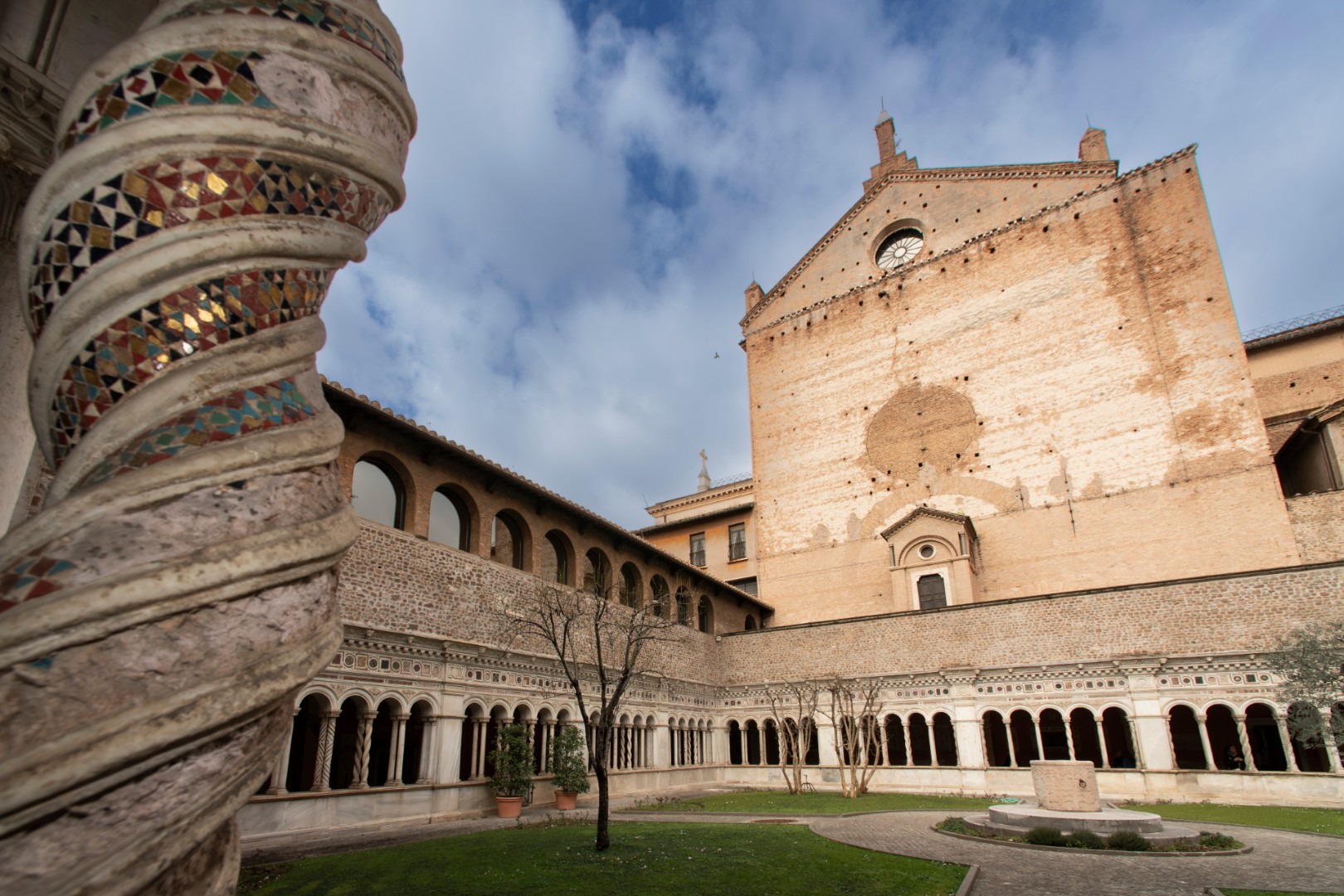The construction of the cloister began in 1222, under Pope Honorius III, and continued until the years of Gregory IX, the time of Saint Francis. It was built by the Lateran canons – the diocesan priests who had adhered to the rule for a common life, inspired by Saint Augustine. The cloister itself, which is the open courtyard that not only connected the different rooms of their life, but also facilitated dialogue, fraternity, study and common prayer, is an image of this form of life. The mosaic inscription, which is still perfectly legible, states among other things: “claustri structura sit vobis docta figura”, i.e. let the very structure of the cloister be for you a “learned” figure of such a common life.
Along the walls, the medieval age papal cathedra, known as the “sedia stercoraria” or “dung chair”, because in the ancient ritual the newly elected pope was reminded that he was merely a man and that, as the Psalm proclaims:
“He raises the poor from the dust,
and lifts the needy from the ash heap,
to make them sit with princes,
with the princes of His people” (Psalm 133 (112), 7-9).
The cloister also conserves what remains of the magnificent tomb sculpted by Arnolfo di Cambio for Riccardo Annibaldi, who was the uncle of an Annibaldi, disciple and friend of Thomas Aquinas. In the work of Arnolfo, who preceded Giotto, we find the incipient humanism of the Roman Middle Ages, with depictions that no longer have anything Byzantine about them: in the funeral procession, two torch-bearers are depicted, two holding the missal and mitre, another holding the jar of holy water, and even a ministrant blowing, with puffed cheeks, into the censer, to revive the fire.
The tombstone with the face of Lorenzo Valla, who died as a Lateran canon, is also preserved in the cloister: in the tombstone there are also the books that tell of his stature as a humanist.





